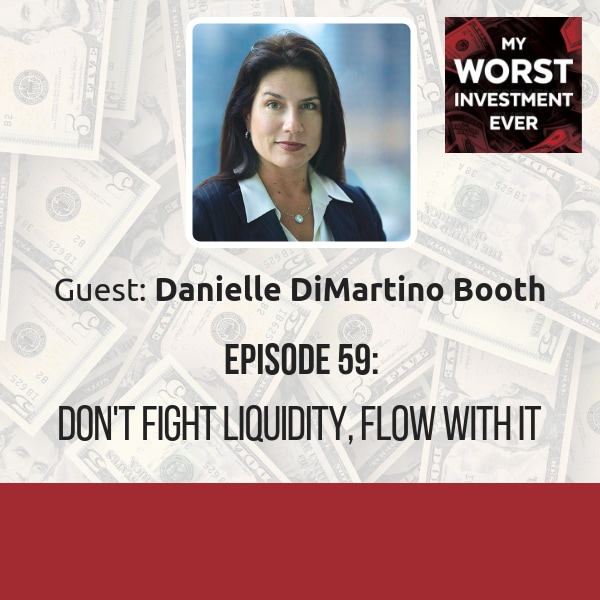
Shownotes
Danielle DiMartino Booth is CEO and director of Intelligence for Quill Intelligence LLC, a new research and analytics firm. She is known for her meticulous research in the financial markets and her unique perspective honed from years of experience in central banking and on Wall Street. Danielle is a global thought leader sought after for her insights on monetary policy in the United States and elsewhere. In a sign of her ideas’ value, European Parliamentarians invited her to Brussels in May 2018 to share her insights on global economic trends and fiscal policy.
Track record at Federal Reserve Bank of Dallas
Earlier last decade, Danielle spent nine years from 2006 at the Dallas Fed, where she served as the advisor to that district’s president, Richard W. Fisher, until his retirement in March 2015. She provided market intelligence and policy briefings and advised Fisher on policy, a unique role, which had not existed outside of the New York Fed before her appointment. Get to know Danielle in today’s feature story, her remarkable career journey from working in equity markets and then being an advisor to Fisher, to her current role as a financial consultant, author, and commentator. More importantly, discover what she regards as her most significant investment loss and the valuable lessons she learned from it.
“My biggest lesson that I’ve ever learned is that I will never again deny the simplicity and the utility of liquidity and it’s as simple as that.”
- Danielle DiMartino Booth
Financial analyst has dodged some serious bullets in her time
While these podcasts are about missteps all our guests have made, Danielle has also had a considerable share of good fortune or made decisions that saved her from calamity; none perhaps more than her rejection of employment offers from four of the most infamous or ill-fated companies in US history: Arthur Andersen, Enron, Lehman Brothers, and Bear Stearns.
So, as she told Andrew: “You never know in life that your choice might just end up being serendipitous but indeed providential at the same time.” This all happened was right before Danielle started working on Wall Street, which was before she returned to Dallas to serve at the Federal Reserve, which was also a move she had never planned to make. Danielle revisits New York every two or three weeks to contribute analysis to media outlets as one of the “Fed Whisperers,” offering explanations as she “understands how central bankers think,” which is a rare talent.
‘Chief architect’ of liquidity rebirth failed to take her own advice
As a Fed insider, Danielle witnessed the meltdown following the financial crisis of 2007-2008. Her Dallas Fed boss at the time, Richard Fisher, was being criticized for comments against the Fed lowering interest rates to the “zero-bound.” He had pointed out that the ongoing problem was not a case of the price of credit being the impediment to the market working but rather liquidity being frozen, despite it being richly liquid in the years beforehand.
Danielle witnessed and understood her boss’ comments. She had helped to create many of the liquidity systems applied via the New York Fed. She had helped to turn on the financial “jaws of life” to force open the capital markets with liquidity facilities. What she realizes now is she had listened but not truly heard, looked but not truly seen. She had learned nothing from experience.
Despite being “one of the chief architects of these facilities”, she said was perhaps blinded by the emotion brought on by taking interest rates to zero unnecessarily. Then she saw first-hand the collapse of the global investment bank, Lehman Brothers, and the bailout of AIG at the cost of US$85 billion bailouts. In the following months, she saw quantitative easing (QE, more or less printing money) rolled out and the effect that had on financial markets. Again and again, she failed to recall the lesson she had taught others about the importance of liquidity.
Now 10 years on, Danielle notes that the European Central Bank (ECB) finally stopped its QE program (one of the measures used to stimulate liquidity and therefore the markets) early this year but flags up that it is going to be the first for being “net negative in a global liquidity position in over a decade”.
Danielle’s takeaways
1. When liquidity opened up, Danielle says she should have jumped in feet first and invested enthusiastically to follow the flow until ECB chairman Mario Draghi put a halt on the ECB’s QE, but not until then because …
2. “Liquidity is global. It is fungible, it is agnostic, it knows no borders, and it knows no asset classes. It flows to wherever the cracks are open.”
Liquidity moves where it can “find a home.” Every single asset class in the world has moved up, even gold, because of the rise in liquidity, which, over the past decade, “has found many homes”:
- Australian, New Zealand and Canadian real estate
- Many commodities markets
- Hong Kong residential real estate
- Commercial real estate in London
- Corporate bonds in the United States
- Stocks almost anywhere
3. Investors need to understand that as long as the wave of liquidity exists, they should not fight the waves. She explains: “As long as the liquidity is abundant, then you should be invested in risky assets.”
4. BUT: Now that liquidity is being withdrawn, the markets (and investors) do not like it at all.
5. Investors worldwide should be really aware of what central bankers are doing, and that is, all central bank bosses are applying the same policies